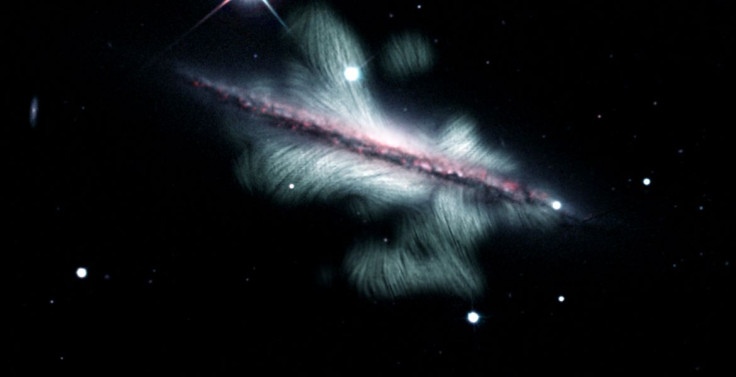Helix Structure, 'Superbubble' Found In Spiral Galaxy's Magnetic Field

KEY POINTS
- Researchers created a comprehensive image of the magnetic field of a nearby spiral galaxy
- They found various interesting structures in the massive magnetic field
- How such structures in galactic magnetic fields form remain to be a mystery
Researchers detected interesting structures in the magnetic field of a spiral galaxy similar to the Milky Way. The comprehensive image adds valuable information that contributes to understanding galactic magnetic fields.
When people think of galaxies, they often think of stars, dust and gas but, these galaxies can also have massive magnetic fields that are, so far, poorly understood. To have a better understanding of magnetic fields in spiral galaxies, a team of researchers used radio data from the Continuum Halos in Nearby Galaxies- an EVLA Survey (CHANG-ES) project to investigate the magnetic field of a spiral galaxy called NGC 4217, which is a Milky Way-like galaxy just about 67 million light years away.
By combining various methods that enabled them to visualize the galaxy's magnetic field, the researchers created a comprehensive image wherein they found new and interesting structures.
In the image, one can see that NGC 4217 has an X-shaped magnetic field structure that extends beyond the galaxy's disk by as much as 22,500 light years. Similarly-shaped magnetic field structures have also been observed in other galaxies.
The researchers also observed a helix structure in the northwestern part of the galaxy as well as two large "superbubbles," which have been associated with locations where many stars go supernova. Further, they also found "loop structures" along the entirety of the magnetic field, something that they say has "never been observed before." The team suspects it might be caused by star formation.
"It is fascinating that we discover unexpected phenomena in every galaxy whenever we use radio polarisation measurements," study co-author Rainer Beck of the Max Planck Institute for Radio Astronomy said in a news release. "Here in NGC 4217, it is huge magnetic gas bubbles and a helix magnetic field that spirals upwards into the galaxy's halo."
How such massive magnetic fields form and are maintained is still unclear. The leading explanation, so far, is called the dynamo theory, which states that magnetic fields are generated by the motion of plasma within the galaxy. However, the details remain to be uncertain. In the case of the image, the possible causes of the structures are still speculative.
As such, more observations of galactic magnetic fields are needed to better understand their nature.
"This image clearly shows that when we think of galaxies like the Milky Way, we should not forget that they have galaxy-wide magnetic fields," study lead Yelena Stein of the Centre de Données astronomiques de Strasbourg said in a news release from the National Radio Astronomy Observatory.
The study is published in the journal Astronomy & Astrophysics.
© Copyright IBTimes 2025. All rights reserved.






















